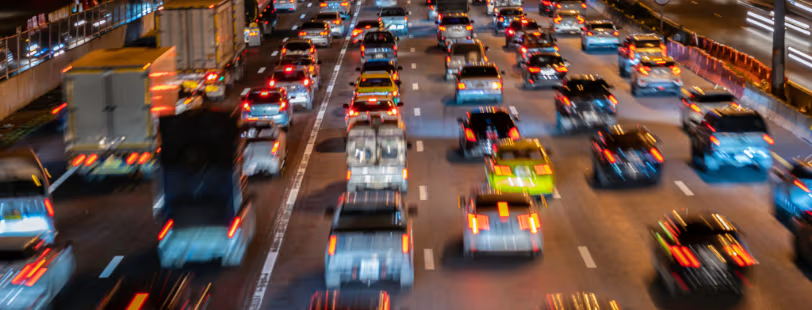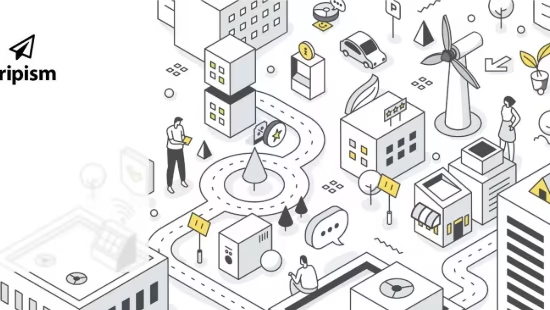
These are the World’s Most Congested Cities: Istanbul Tops, NYC Follows
Traffic congestion continues to be a critical challenge for cities worldwide, impacting both local citizens and travelers alike. The recently released 2024 Global Traffic Scorecard by INRIX, Inc. sheds light on how much time, money, and patience are lost to gridlock each year. With nearly 1,000 cities across 37 countries analyzed, the report provides valuable insights into commuter trends, global traffic congestion, and urban mobility issues.
Istanbul’s 105 hours lost to congestion topped the worldwide rankings, followed closely by New York City (102 hours) and Chicago (102 hours). Ten U.S. cities made the Top 25 worst congested cities in the world as more employees returned to the office and leisure activity on nights and weekends increased as a result.
These figures highlight a pressing reality: congestion is not just a local inconvenience but a global issue with far-reaching economic and personal implications.
“Every year since 2020, we’ve seen traffic gradually rise towards what it was pre-pandemic,” said Bob Pishue, transportation analyst at INRIX and author of the 2024 Global Traffic Scorecard. “While the U.S. is still behind pre-2020 levels of traffic, a pullback of remote and hybrid work models, specifically in tech-heavy areas like San Jose, San Francisco, and Seattle, brought a large jump in downtown trips, which is a good sign for metropolitan economies. The data also shows more economic activity Saturday and Sunday evenings as the downtown core returns to life.”
The higher number of daily commuters heading downtown can bring economic benefits, but it’s a double-edged sword. Pishue continued, “Traffic can be an indicator of economic boon, but ironically, it’s a hamper on economies in of itself. Each minute spent waiting in traffic results in money and productivity lost.”
Americans Waste One Week a Year Sitting in Congestion
New York City, Chicago (both with 102 hours), and Los Angeles (88 hours) are the most congested cities in in the United States, costing drivers $1,826 and $1,575 respectively. The country’s biggest increase in traffic congestion came from 15th-ranked Denver, where residents saw a 19% increase in traffic delay compared to 2023.
Overall, congestion resulted in drivers losing an average of 43 hours to traffic jams in 2024, equal to about one work week, costing $771 in lost time and productivity. Nationwide, this sums to more than four billion hours lost, costing $74 billion in lost time.
Table 1: 10 Most Congested Urban Areas in the U.S. Traffic Congestion
| 2024 US Rank (2023 Rank) | Urban Area | 2024 Hours Lost (2023) | Percent Change | 2024 Cost per Driver | 2024 Cost per City | Downtown Speed
(mph) |
| 1 (1) | New York City, NY | 102 (101) | 1% | $1,826 | $9.5 B | 13 |
| 2 (2) | Chicago, IL | 102 (96) | 6% | $1,826 | $6.6 B | 14 |
| 3 (3) | Los Angeles, CA | 88 (89) | -1% | $1,575 | $8.5 B | 22 |
| 4 (4) | Boston, MA | 79 (88) | -10% | $1,414 | $2.7 B | 13 |
| 5 (6) | Philadelphia, PA | 77 (69) | 12% | $1,378 | $3.3 B | 14 |
| 6 (5) | Miami, FL | 74 (70) | 6% | $1,325 | $3.4 B | 20 |
| 7 (8) | Houston, TX | 66 (62) | 6% | $1,181 | $3.5 B | 17 |
| 8 (9) | Atlanta, GA | 65 (61) | 7% | $1,164 | $2.9 B | 18 |
| 9 (7) | Washington, DC | 62 (63) | -2% | $1,110 | $2.8 B | 12 |
| 10 (10) | Seattle, WA | 63 (58) | 9% | $1,128 | $1.8 B | 18 |
Downtown’s Revival
Nine out of 10 of the United States’ largest metros saw trips increase into the city core, capped by a sharp +25% increase in trips to Downtown Houston, followed by Chicago (+13%), Dallas (+12%) and Atlanta (+10%). INRIX analysis has pinpointed that the increase in downtown trips across the country is not only due to a return to in-person work, as Saturdays and Sundays saw the largest year-over-year increases in nighttime trips to downtown (12.5% and 12.7%, respectively). These findings suggest the same improvements cities made to attract employees downtown are also responsible for driving increased leisure/entertainment activity and a return to nightlife.
The Most Congested Corridors in the U.S.
Delay on the country’s busiest roads continues to be one of the most volatile traffic metrics. After holding three spots in the top 10 in 2023, Stamford, Connecticut’s infamous I-95 is now number one in the country’s most congested roads, seeing an influx of traffic from both commuters and freight truck drivers across the tri-state area. Roads in New York and California hold 12 of the 25 spots in INRIX’s most congested U.S. corridors rankings.
Table 2: 10 Most Congested U.S. Roads in 2024: Global traffic congestion
|
Rank |
Urban Area |
Road Name |
From |
To |
Peak Hour | 2024 Peak Minutes Lost | 2024
Hours Lost |
| 1 | Stamford, CT | I-95 SB | Westport | Indian Field Road | 8:00 AM | 38 | 151 |
| 2 | Boston, MA | I-93 SB | Charles River | Pilgrim’s Highway | 3:00 PM | 27 | 109 |
| 3 | Dallas, TX | US-80 EB | I-635 | Forney, TX | 5:00 PM | 22 | 88 |
| 4 | New York City, NY | I-278 BQE WB | I-495 I’Chnge | Tillary Street | 4:00 PM | 21 | 85 |
| 5 | Chicago, IL | I-55 SB | I-90 | S Cicero Ave | 4:00 PM | 20 | 79 |
| 6 | Chicago, IL | I-90 EB | Cicero Ave | W Fullerton Ave | 8:00 AM | 20 | 79 |
| 7 | Chicago, IL | I-90 EB | Cicero Ave | Ohio Street | 8:00 AM | 19 | 76 |
| 8 | New York City, NY | Cross Bronx Expy SB | Bruckner Expy | Walter Gladwin Park | 4:00 PM | 17 | 67 |
| 9 | Chicago, IL | I-290 EB | S Wolf Road | Harlem Ave | 5:00 PM | 13 | 66 |
| 10 | Chicago, IL | I-90 WB | W Ontario Street | W Irving Park Rd | 4:00 PM | 13 | 64 |
International Cities Grew at a Faster Rate
While most large U.S. metros saw an increase in traffic delay in 2024, many areas outside of the United States grew at an even higher rate. Four cities in the Global Top 10 alone saw double-digit increases in traffic delay compared to 2023. For comparison, only five cities in this year’s U.S. Top 25 saw double-digit increases, with zero coming in the top 10. Additionally, 3 out of 4 cities in the 2024 Global Top 25 that saw year-over-year decreases in traffic congestion came from the U.S.
Table 3: 10 Most Congested Cities in the World in 2024: Global traffic congestion
| 2024 Impact
Rank |
Urban Area |
Country |
2024 Delay per Driver (hours) | 2023 Delay per Driver (hours) | Change from 2023 |
Downtown Speed (mph) |
| 1 (6) | Istanbul | TUR | 105 | 91 | 15% | 15 |
| 2 (1) | New York City, NY | USA | 102 | 101 | 1% | 13 |
| 3 (5) | Chicago, IL | USA | 102 | 96 | 6% | 14 |
| 4 (2) | Mexico City | MEX | 97 | 96 | 1% | 13 |
| 5 (3) | London | GBR | 101 | 99 | 2% | 13 |
| 6 (4) | Paris | FRA | 97 | 97 | 0% | 13 |
| 7 (10) | Jakarta | IDN | 89 | 65 | 37% | 13 |
| 8 (7) | Los Angeles, CA | USA | 88 | 89 | -1% | 22 |
| 9 (9) | Cape Town | ZAF | 94 | 83 | 13% | 14 |
| 10 (12) | Brisbane | AUS | 84 | 74 | 14% | 21 |
Combatting the Congestion Crisis
Access to reliable, consistent data is the first step in tackling congestion. Applying big data to create intelligent transportation systems is key to solving urban mobility problems. INRIX data and analytics on mobility, traffic signals, parking, safety, and population movement can help city planners and engineers make data-based decisions to prioritize spending to maximize benefits and reduce costs now and into the future.
The key findings of the INRIX 2024 Global Traffic Scorecard provide a quantifiable benchmark for governments and cities across the world to measure progress to improve urban mobility and track the impact of spending on smart city initiatives.











